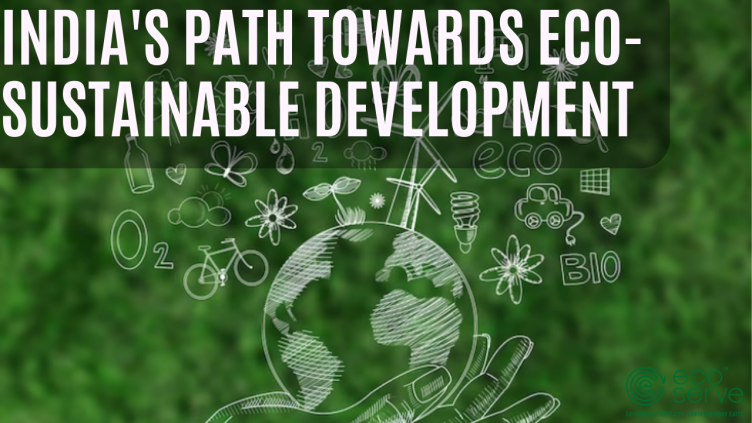India, a country with a population of 1.3 billion, is striving towards sustainable development while balancing economic growth and environmental conservation. The country’s economy is one of the fastest-growing in the world, and with such rapid development comes challenges that can harm the environment. However, India has taken a proactive approach to promote eco-sustainable development.
One of the significant initiatives taken by India towards eco-sustainable development is the National Action Plan on Climate Change (NAPCC). The NAPCC aims to promote sustainable development while addressing the challenges of climate change. The plan focuses on eight core areas, including solar energy, energy efficiency, sustainable agriculture, and sustainable habitats, to name a few.
India has set an ambitious target of achieving 175 GW of renewable energy capacity by 2022. The country has also launched the International Solar Alliance (ISA) in partnership with France, which aims to promote the use of solar energy worldwide. The ISA has brought together 121 countries that are rich in solar energy resources.
India’s transportation sector has been a significant contributor to greenhouse gas emissions. To tackle this issue, the government has launched the Faster Adoption and Manufacturing of Electric Vehicles (FAME) scheme to promote the adoption of electric vehicles. Under this scheme, subsidies are provided to manufacturers, and incentives are given to consumers who purchase electric vehicles.
Another critical area that India is focusing on is sustainable agriculture. India is primarily an agrarian economy, and sustainable agriculture practices are crucial to maintain soil fertility, prevent soil erosion, and reduce water usage. The government has launched several initiatives to promote sustainable agriculture practices such as organic farming and the use of biodegradable pesticides.

India has also taken steps to promote eco-tourism, which has the potential to create jobs and promote economic growth while preserving natural resources. The country has several eco-tourism destinations, such as wildlife sanctuaries and national parks, which attract tourists who are interested in experiencing nature and wildlife.
India has a rich and diverse cultural heritage, which includes a variety of sustainable art forms. Some of the most prominent examples of sustainable art forms in India include Madhubani paintings, Warli paintings, Pattachitra, Chikankari embroidery, and Kalamkari. These art forms have been passed down from generation to generation and are deeply rooted in the local culture and traditions. They use sustainable materials such as natural dyes, cotton fabric, and organic paints, which have minimal environmental impact. Sustainable art forms in India not only preserve the cultural heritage of the country but also promote sustainable and eco-friendly practices, making them an important part of India’s artistic and cultural landscape.

In conclusion, India has made significant progress towards eco-sustainable development through various initiatives such as the NAPCC, promotion of renewable energy, electric vehicles, sustainable agriculture, and eco-tourism. These efforts have helped India to balance economic growth and environmental conservation, and the country is well on its way towards achieving its sustainable development goals. However, much more needs to be done, and sustained efforts and partnerships will be crucial in achieving India’s vision of a sustainable future.






